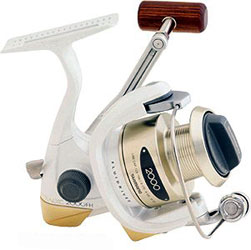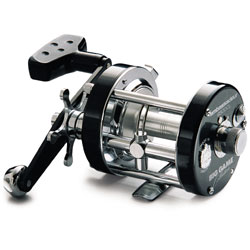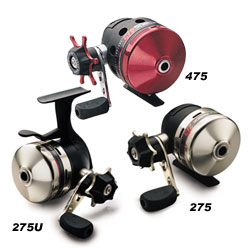Reels
One of the key components of your fishing gear is the reel.

http://www.eangler.com/eangler/proshop/reels.asp?shopby=D&dept_id=67&dept_image=reels.gif&pageheading=Reels&JEX=101025
These are spinning reels designed for smaller fish. You would probably use a reels like this for lakes.
These reels usually have a series of gears that turn the line collecting devices several times for each crank of the handle.
The reel on the left is the simpler design. That design has a stationary spindle and a bar that rotates around it to collect the line. On most models the drag works by a screw on the top of the spindle that applies pressure on the spindle to increase or decrease the friction to allow the spindle to spin if the fish applies enough force to overcome the friction. The problem with this design is that once the fish breaks the static friction the resistance to the fish pulling out line decreases and it is very difficult to change while fighting a fish.
the closed faced reels have a small peg inside that catches the line and then spins around the top of the spindle. For this design the reel has a plate that can be moved up and down by a dial on the front. This plate is what controls the drag. The advantage of this method is that it allows you to adjust the drag while you are fishing.

This reel is designed for off shore fishing. This real is much larger and is geared so you must crank the handle several times in order to get the spindle to make a complete rotation. A handy thing if you have to haul up a fish that is 50kg or more from the bottom of the ocean. This reel works by turning the spindle while the line feeder remains stationary. The drag works by pushing a plate into the spindle. There is a knob on the side that allows you to increase the pressure on the plate. When setting your drag you must take into account more then line strength. You must also take into account your hook and the strength of the flesh that you are probably hooking into. For instance if you are king fishing with 40 lb test line (approximately 18 kg) you may not want to set your drag to the line strength, because if you hook a fish on the edge of its mouth then the fish may apply enough force that the hook will actually cut through the fishes flesh.
